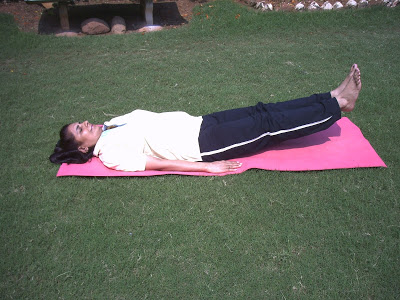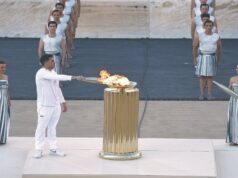Yogic Medical Solution Serial No 3

Yogic Practices for Epilepsy
By Dr Rita Khanna
The word ‘epilepsy’ comes from the Greek word ‘epilepsia’ which means ‘to seize upon’. Epilepsy is a cerebral (brain) disorder in which repeated fits or attacks of unconsciousness occur with or without convulsions. It is a serious disorder of the central nervous system (CNS) caused by abnormal electrical activity within the brain due to damage of brain cells or some inherited abnormality. It occurs in both children and adults. Most attacks, however, occur in childhood and in early adult life. Attack rates show a progressive decline in frequency with age.
The ancient people believed that evil spirits entered the body of the persons affected, seized upon his soul and threw his body into convulsions. In India, if a man suffers from epilepsy, people nearby would insert spoon in the mouth so that the patient does not bite his own tongue. It is also understood that people keep shoes, ammonium salts, or even crushed onions before the nose of the patients. Some people will undertake to invite Raandal-mata (Hindu Goddess name). She will visit and will also have violent head shaking.
Causes:
Unknown factors, intracranial (brain) diseases such as tumours, head injuries and strokes, low blood sugar (hypoglycemia), kidney disease (uremia), heart disease (blocks of conduction), social or family circumstances, hereditary, mental tension, lack of sleep, particular type of circumstances or situations e.g. fear of examination, some social events causing displeasure,the loss of a near relative by death, withdrawal of alcohol or drugs, chronic constipation, digestive disturbances, intestinal toxaemia, less intake of water, sex disorder, meningitis, typhoid, refined foods, fried food, prolonged lack of vitamins and minerals, the waste matter produced in the body.
Symptoms:
The main symptoms of epilepsy are repeated seizures.There are different types of seizures. It varies from person to person. Some people may have simple staring spells, while others have violent shaking and loss of alertness. The type of seizure depends on which area of his brain is affected. We can divide out epilepsy seizures into two parts:
Petit mal (minor epilepsy), Grand mal (major epilepsy)
Petit mal:
In petit mal seizure which is a less serious form of epilepsy, an attack comes and goes within a few seconds. In that condition the patient has a momentary loss of consciousness, with no convulsions, except sometimes a slight rigidity, or there may be a slight attack of convulsion such as a jerk, or a movement of eyes, head, trunk or extremities, with no perceptible loss of consciousness. The patient may not fall. He may suddenly stop what he is doing and then resume it when the attack is over, without even being aware of what has happened. Petit mal attacks may occur at any time in life but are most frequent in children. This petit-mal could end in childhood or it is possible that it may turn into a grand-mal.
Grand mal:
A grand mal seizure is a seizure involving the entire body. At that time there is suffocation of breath & the person becomes unconscious suddenly and his whole body convulses and it is possible that his face as well as hands and feet toss about restlessly. This also affects urinary system and a person may urinate in that condition. Mostly this type of condition does not last long. Before the onset of an attack, some patients get a warning in the form of strange sensations. In young children this may not be described but the mother can often recognize a typical pattern of behaviour. The patient regains consciousness quite quickly and after getting consciousness the patient immediately starts sleeping.
This sleep is deep and sound. When he gets up after such a deep sleep he may suffer headache, vomiting, giddiness, hands and feet may have cramps and mind gets restless. If the patient does not become conscious and convulsions are repeated in the unconscious stage, this condition is known as “Status epilepticus” (SE is a common, life-threatening neurologic disorder). An EEG (Electroencephalogram) is a test that can help diagnose epilepsy.
YOGIC PRACTICES AND EPILEPSY
Epilepsy is a complex phenomenon with many paradoxical aspects. Yoga therapy with Yogic postures, Pranayama, Relaxation and Meditation Techniques has been recommended as one of the additional method of treatment in the holistic management of chronic intractable epilepsy. Forward bending and inverted Yoga postures help in bringing awareness and concentration to the head region and increase in sensory-motor rhythm, decreasing stress and possibly influencing brain plasticity. If the reason for convulsions is psychosomatic these Yogasanas and Pranayama will revitalize the patient and his life will be rejuvenated.
YOGASANAS:
Ekapada Uttanapadasana:
Lie in supine position with your legs together, and hands by the side. While exhaling, raise the right leg up to 30 degrees from the floor, hold it for 20 seconds with normal breathing, then inhale and come back. Repeat the same with the left leg. Keep repeating this with alternate legs for some time.
Uttanapadasana:
Repeat the above exercise with both the legs together. Initially start with 20 seconds with normal breathing; slowly form a habit of remaining in Uttanapadasana for a minimum of one and half minute.
This exercise adds to working of respiratory system, increases the working capacity of body, self confidence and reduces the thoughts of weakness and dejection to almost nil level.
Sarvangasana:
Lie down in the supine position with the legs together, hands by the side and palms facing the floor. Inhale slowly and while exhaling, raise both the legs together at a 90-degree angle to the floor. Now press the palms and bring the legs towards the head, so that the buttocks face upwards. Now bend the elbows and support the back with the palms. Then take the legs upwards till the legs, abdomen, and chest form a straight line. The chin should be placed against the jugular notch. Hold this for some time, breathing normally. While coming back to the original position first lower the buttocks; release the hands slowly and bring the legs down without raising the head.
Vipreetkarni:
Put your feet together and hands by the sides with the palms resting on the floor. Now inhale slowlyans while exhaling raise both your legs up, 90 degrees to the floor. Then push your palms on the floor and raise your hips up. Hold your waist with your hands in the final position. Remember to keep your neck muscles relaxed and breathe normally. Stay in this position for 15 to 20 seconds and then come back slowly to the original position in a reverse manner.
Note: If it is not possible to lift the back you can get partial advantage by keeping face up on ground and raising the legs either on a table or a cot or up along the wall.
Both Sarvangasana and Viparitakarni- Mudra can be very helpful in alerting brain with its sensory nerves and system of consciousness and understanding.
Uttanapadasana, Viparitakarnimudra or practice of Sarvangasana can be helpful to pump in blood to the head in extra quantities. Although it is true that head gets maximum blood by practice of Shirsasana, the patient of convulsions should under no circumstances practice ordinary Shirshasana. For such patients, there are other methods to take blood circulation to the head. One can sleep with face pointing upwards on a table or a cot keeping the head hanging down. In this process the back is at the bottom, belly is in the top, both legs are kept together, the palms of the hands point downward and head hanging. In this position the head is at a lower level than the heart. Therefore the head gets supply of blood in greater proportion. This excercise should be performed initially from half a minute to one minute. Gradually the time could be increased between five to ten minutes. Even after performing this exercise it is essential to perform Shavasana. We should perform Shavasana for half the period for which we perform the main Asana
Shashankasana:
Sit in Vajrasana with the back straight. Slowly inhale and raise both the hands upwards. Now exhale, and bend forward slowly. Touch your palms on the floor by stretching the arms but without bending the elbows. Now place your head on the floor with the abdomen pressed to the thighs. Do not raise the buttocks. Hold this position.
In this asana the head goes lower than the heart, so it has to work less in pumping the blood to the brain.By lying in this position the blood circulation to the head is increased.
Neck exercise: A patient of convulsions can profitably use the process of turning the neck from right to left and left to right on the front side and back side as well as turning the head in circular motion in both directions.
PRANAYAMA:
Bhramri Pranayama: Sit in any meditative or comfortable position on the floor, with your back straight, shoulder muscles relaxed and eyes closed. Inhale deeply and exhale slowly while making a sound like that of a bee, without giving stress to the throat and facial muscles.
Omkar Pranayama:
Sit in any meditative or comfortable position on the floor, with your back straight, shoulder muscles relaxed and eyes closed. Inhale deeply and exhale slowly while chanting Om without giving stress to the facial muscles.
Bhramari Pranayama and chanting prolonged Omkar help upgrade the nervous system tremendously.
Anulom Vilom Pranayama:
Use the thumb of your right hand to close your right nostril and inhale with your left nostril. Then close your left nostril with your right hand’s index and middle fingers and exhale from the right nostril. Now, in the reverse manner, inhale with the right nostril, close your right nostril with your right hand’s thumb then exhale with the left. This forms one round of Anulom Vilom Pranayama.
Note: we should inhale and exhale with awareness, slowly and equally. This type of awareness is essential. The more deeper the inhaling & exhaling the more is the effect.
Anulom Vilom Pranayama is an unfailing panacea for mental peace and composure. We are normally not aware of our inhalation and exhalation. This is such a process which is self-propelling. Our body has nine openings for conveying sensations by sensory nerves and performing actual work. But the nose is the principal opening by which we perform respiration. If one keeps oneself slightly aware of this process then a very good achievement can be had in avoiding cerebral disorder.
Do all RelaxationTechniques.
YOGIC KRIYAS:
Yogic kriyas such as Laghoo Shankhaprakshalana, Kunjal and Neti Kriya can be combined with the above practices under expert guidance. It is not recommended for all cases of epilepsy unless expert guidance is available.
AVOID:
• Any practice that involves fast breathing (Hyperventilation) could trigger off an attack and hence is contra indicated (Avoid Kapalabhati, Bhastrika etc).
• Balancing postures are to be avoided.
• Trataka is very useful. Avoid doing Trataka on candle light.
• Avoid all refined foods, fried and greasy foods, sugar and product made with it, strong tea coffee, alcoholic beverages, condiments and pickles – take frequent small meals rather than a few large ones.
DIET PROGRAM:
The most important aspect of treatment of epilepsy is the diet.
• Two usual (substantial) meals
• One meal of raw vegetable salad, with a drink of buttermilk. One of cooked vegetables.
• Once a week a semi fast, only liquid diet
• Fasting on Ekadashi days
• Drink lots of water in small sips.
GUIDELINES:
• An epileptic must avoid excitement of all types. His sex life must be severely restricted.
• Whenever one feels attack is coming, loosen the dress, apply wet pack on neck, stomach, hands and feet.
• Where convulsions are experienced once only one has to be treated with medicine for 4 to 6 weeks but if convulsions repeat 2 to 4 or more times, the medicine dose should be increased and then gradually reduced or even stopped if no necessity is felt. However, for a patient of repeated bouts of convulsions one should not be careless and should continue the treatment of some special medicine for a fairly long period.
• If we observe some one suffering from such convulsions while we are passing along a road we should shift that person from the middle of the road, to a place on side where it is quiet and breeze is blowing. He will suffer less suffocation if his clothes are loosened. He needs to lie down normally. In order that he may not chew his tongue and may not damage his teeth some soft padding should be introduced in between two rows of teeth.
• If a child gets convulsions he must be admitted immediately to the hospital. It is not so essential in case of an adult, but we cannot overlook the possibility of meningitis in case of children.
• A person who gets convulsions should be kept in social surroundings which would encourage him. He should be kept away from such conditions which can make him feel dejected or sorrowful. If one ensures that such a patient always remains happy, joyful, and enthusiastic, it is possible to keep him fearless.
• If the sufferer from epilepsy has taken strong drugs for many years, he should not leave off entirely all at once. The dosage may be cut down to half to begin with and then gradually reduced further until it can be left off completely.
• The epileptic patient should be encouraged to lead as normal a life as possible but some activities are unacceptably risky like swimming and driving and should be avoided. Thus for instance, bicycle riding on the main road may be fatal if the child has a convulsion. Similarly, unsupervised swimming should be prohibited. The child should be allowed to undertake certain activities, which involve considerable risk, only in the presence of a responsible adult.
• Adopt Yoga, Pranayama and Meditation Techniques. Normal health and peace of mind can be gained through effort and constant practice, leading on into the realms of timeless peace.
• Avoid negative emotions such as anxiety, fear, hostility, insecurities, mental worries and tensions. Try to be cheerful.
CONCLUSION:
Respiratory system is the main stand for mental consciousness. If the respiration process is regularized, the convulsions that one gets due to latent fears, doubts, misunderstandings or mental problems can surely be reduced.
Regular practice of Meditation, good reading, good thoughts, positive and decisive thinking, the company of enthusiastic and full-blown people can render mental composure and joyfulness. “I am getting cured. I am already cured.
All round beauty is streaming, whatever is, is God’s creation, I am also a creation of God. God is there in everything visible, everything discernible. God is inside me, these hands, legs, head, chest, belly, happiness, unhappiness, bliss, space and everything is God. I am infinite, I am integral, I am a stream of happiness.” Think thus in this train of thoughts. Remain joyful, “Fits” (convulsion) will definitely be cured and you will be “fit”.



